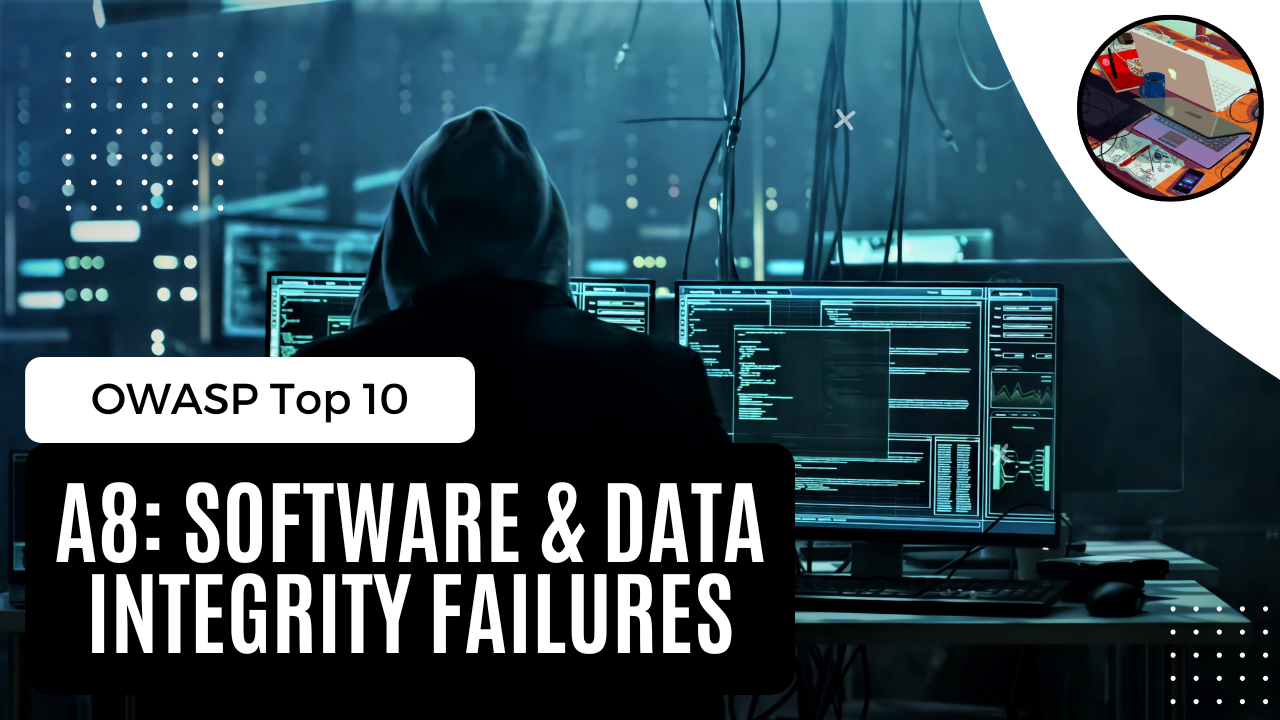Understanding OWASP Top 10 - A8: Software & Data Integrity Failures Explained
 Vedant Kahalekar
Vedant Kahalekar
Where Can We Find It?
This vulnerability occurs when software updates, libraries, or critical data are not properly validated, allowing attackers to tamper with them. Commonly found in:
Software Updates & Supply Chains (Unsigned or unverified updates)
CI/CD Pipelines (Injection of malicious code in builds)
Deserialization & Data Storage (Tampered data files, untrusted input in configs)
How It Works?
Attackers exploit weak integrity controls to:
✅ Inject malicious code into software updates or dependencies.
✅ Modify sensitive data (e.g., financial transactions, config files).
✅ Tamper with CI/CD pipelines to introduce backdoors in builds.
💀 Example 1: Malicious NPM Package Injection
A maintainer of a popular NPM package gets hacked.
The attacker pushes a new update with a backdoor that steals user credentials.
Thousands of applications update the package without verifying its integrity.
Fix: Use package signature verification (e.g., SLSA, Sigstore) and monitor dependencies.
💀 Example 2: CI/CD Pipeline Attack
A company’s Jenkins build server uses an unverified script for deployment.
An attacker injects malicious code into the script, which gets deployed to production.
Fix: Use code signing, strict access controls, and integrity checks for build pipelines.
Common Types of Software & Data Integrity Failures
1️⃣ Untrusted Software Updates
Example: A mobile app downloads an update over HTTP, allowing attackers to intercept and inject malware.
Fix: Always use signed, encrypted updates with integrity verification.
2️⃣ Tampered Dependencies in Open-Source Packages
Example: Attackers inject malware into a widely used PyPI/NPM package (e.g.,
event-streamcase).Fix: Use dependency scanning tools like Snyk, Dependabot, or OWASP Dependency-Check.
3️⃣ Insecure CI/CD Pipelines
Example: A developer’s stolen credentials allow an attacker to push malicious commits to a repo.
Fix: Implement code reviews, access restrictions, and commit signing.
4️⃣ Unvalidated Deserialization & Data Integrity Attacks
Example: A web app trusts user-uploaded JSON without validating it, allowing an attacker to modify session data.
Fix: Use secure deserialization techniques and validate all external inputs.
How to Mitigate Software & Data Integrity Failures?
✅ 1. Secure Software Updates & Dependencies
Always verify software updates using digital signatures (PGP, Sigstore).
Fetch updates only from trusted sources (official vendor repositories).
✅ 2. Protect CI/CD Pipelines & Build Integrity
Use secure access controls for CI/CD environments.
Require code reviews & automated security scans before deployment.
✅ 3. Validate & Monitor Dependencies
Use package integrity tools (e.g., npm audit, pip-audit, OWASP Dependency-Check).
Implement runtime monitoring for unexpected behavior.
✅ 4. Prevent Data Tampering & Secure Configuration
Use cryptographic hashes (SHA256) to verify data integrity.
Store critical data in secure, write-protected environments.
✅ 5. Implement Strong Deserialization Security
Avoid using
eval()or unserializing untrusted data.Sanitize and validate all serialized inputs.
Real-World Case Study: SolarWinds Supply Chain Attack (2020)
What Happened?
Attackers compromised SolarWinds’ CI/CD pipeline, injecting a backdoor into their software updates.
The malicious update was digitally signed and distributed to 18,000 customers, including government agencies.
Attackers gained persistent access to sensitive networks.
How They Fixed It?
✅ Implemented strict code signing & supply chain security.
✅ Introduced behavior-based anomaly detection for software changes.
✅ Strengthened CI/CD pipeline security with access controls.
Lesson: If software integrity is compromised, attackers gain control over thousands of systems! 🚀
Subscribe to my newsletter
Read articles from Vedant Kahalekar directly inside your inbox. Subscribe to the newsletter, and don't miss out.
Written by

Vedant Kahalekar
Vedant Kahalekar
Hi, my name is Vedant Kahalekar, and I am a Cyber geek, Computer Science student, content creator, and freelance photographer. I have a deep passion for technology, coding, and cybersecurity, and I spend most of my time learning about the latest trends and developments in the tech industry.